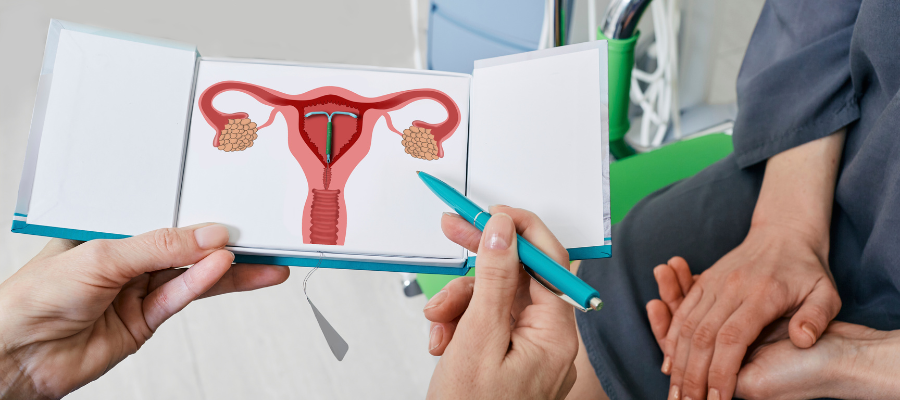Understanding IUI (Intrauterine Insemination): A Comprehensive Guide
What is IUI?
IUI, or Intrauterine Insemination, is a fertility treatment where concentrated motile sperm are placed directly into a woman’s uterus around the time of ovulation. This method increases the chances of sperm reaching the egg, thereby improving the likelihood of fertilization.
Key Benefits of IUI:
• Cost-effective and affordable.
• Easy to perform and does not require an advanced setup.
• Minimally invasive and outpatient-based.
Pre-requisites Before an IUI Cycle
Before proceeding with IUI, certain basic conditions should be fulfilled:
• At least one open (patent) fallopian tube.
• Evidence of regular or induced ovulation.
• Adequate sperm count, motility, and morphology.
• A responsive and healthy endometrial lining.
Who Can Benefit from IUI?
IUI is beneficial in various scenarios, including:
• Unexplained infertility.
• Mild to moderate male factor infertility.
• Mild to moderate endometriosis.
• Ovulatory dysfunction with ovulation induction.
• Cervical or immunological infertility.
• Sexual dysfunctions such as vaginismus or ejaculatory disorders.
• Couples with infrequent intercourse due to travel or overseas employment.
IUI in the Era of IVF
While IVF has revolutionized infertility treatments, IUI still holds a valuable place for:
• Individuals with physical or psychosexual difficulties preventing vaginal intercourse.
• HIV-positive men (with sperm washing techniques).
• Same-sex couples and LGBTQ individuals planning conception using donor sperm.
IUI for Male Factor Infertility
IUI can assist in cases such as:
• Ejaculatory issues like retrograde ejaculation, impotence, or infrequent ejaculation.
• Oligospermia – Low sperm count (<15 million/ml).
• Asthenozoospermia – Poor motility (<40%).
• Teratozoospermia – Poor morphology (<4%).
Note: For severe cases (Count <5 million/ml, Motility <10%, Morphology <2%), ICSI (Intracytoplasmic Sperm Injection) is recommended over IUI.
What is AID (Artificial Insemination by Donor)?
AID involves using donor sperm for insemination when:
• The male partner has azoospermia (no sperm).
• Severe male factor infertility not affordable for IVF/ICSI.
• The male partner has hereditary disorders or is HIV positive.
Semen Cryopreservation: What & Why?
Semen Cryopreservation is the process of freezing sperm for future use. It is useful when:
• The male partner is unable to provide a sample on demand due to psychosexual or medical issues.
• The male partner frequently travels or lives overseas.
Steps Involved in an IUI Cycle
- Pre-treatment Evaluation: Case history, ovarian reserve, tubal status, hormonal profile, semen analysis.
- Counselling & Planning: Discuss timing, procedures, success rates, and cost.
- Ovarian Stimulation: Personalized protocols for follicular growth.
- Monitoring: Serial ultrasounds to track follicular growth.
- Trigger Injection & Timing: Given when follicle >18–20 mm & endometrium >8 mm. IUI is done 36 hours after the trigger.
- Semen Collection & Preparation: Fresh or frozen semen is prepared using sperm wash media.
- Insemination Procedure: 15-minute procedure using a fine catheter to place sperm into the uterus.
Post-IUI Care Guidelines
- Resume normal activities immediately.
• Continue prescribed medications.
• Avoid intercourse on the day of IUI (not restricted afterward).
• Urine pregnancy test (UPT) should be done 15 days post-IUI.
Possible Side Effects of IUI
- Cramping
• Infection
• Ovarian Hyperstimulation Syndrome (OHSS)
• Multiple pregnancy
Success Rates of IUI
Success rates range from 15%–20% per cycle, depending on the underlying cause of infertility.
Factors Affecting IUI Success
- Age of the woman
• Duration and cause of infertility
• Stimulation protocol
• Timing of insemination
• Technique used
• Semen quality
• Number of treatment cycles
• Follicle count at the time of trigger
How Many IUI Cycles Should One Try?
Most successful pregnancies via IUI happen within the first 3 to 6 cycles. Majority conceive within 4 cycles.
Cost of a Single IUI Cycle
A single IUI cycle costs approximately ₹10,000–₹15,000 INR.
Note: This does not include additional costs for medications, tests, or injections required during the cycle.
Final Thoughts
IUI offers a less invasive and affordable fertility solution for couples struggling with conception. While it may not be suitable for every case, it can be a stepping stone before moving to more advanced assisted reproductive techniques like IVF or ICSI.
Interested in knowing if IUI is right for you? Book a consultation with our fertility specialist today.

